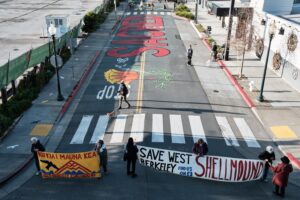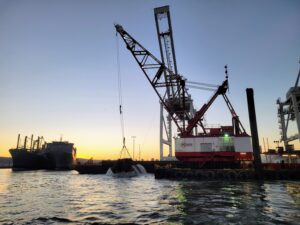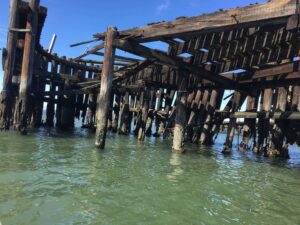The Mavericks surf contest has been called for his Sunday, January 20, after three years in hiatus because of a big wave deficit at the famed break offshore of Half Moon Bay.
Sunday’s conditions are supposed to be fantastic, fanned by “potentially the most powerful Pacific storm in three years,” renowned surf forecaster Mark Sponsler told the San Francisco Chronicle.
The biggest waves surfed are said to be as high as 70 feet, the height of a 4-story building. So what does it take to create these monster waves?
It alls starts in what’s known as the “wave factory” in the Gulf of Alaska, where storms gather thousands of miles away. This area experiences heavy activity from October to February when low pressure from the south clashes with high pressure in the north.
These faraway storms create three key ingredients that make winter our big wave season: wind velocity (how fast it’s blowing), “fetch” (how much surface water area that the wind is blowing over), and duration (how long the wind is blowing over that area). The recipe for big waves is a high dose of all three.
Tides and water depth also affect waves. When the tide is high, the water is deeper. When the tide is low, the water is shallower. As the tide moves from high to low, the wave energy goes to the sea floor, slowing down the wave but concentrating the energy upwards, intensifying the wave height.
But why doesn’t the whole coastline get big waves when the conditions are right?
The final ingredient is underwater topography. Without mountainous regions that rise steeply from the ocean floor, waves can’t become the monster waves at a place like Mavericks. As waves cross what surfers call a “launching pad,” the part of the wave that hits first will slow down, then bend into “V” formation, focusing the wave energy into one intense spot. This is called refraction. At this point, the energy explodes and wave height can more than double in an instant. The explosion is so intense at Mavericks that it registers on a seismograph.
To be part of this seismic action, check the Maverick Surf site and head to Half Moon Bay. Remember to bring binoculars as the waves break about a half mile out, or if you need front row seating, ride the Queen of Hearts, a 50-foot sportfishing vessel that’s taking passengers out to surf waters for $215 a ticket.
And if battling the crowds of Maverick isn’t your thing, another area known for monster waves is Ghost Tree, off the coast of the 18th hole of the Pebble Beach Golf Course in Monterey. Though it doesn’t break as often as Mavericks, it’s easier to see from land.
Former intern Kris Vann wrote the original version of this story on Dec. 18, 2009.





